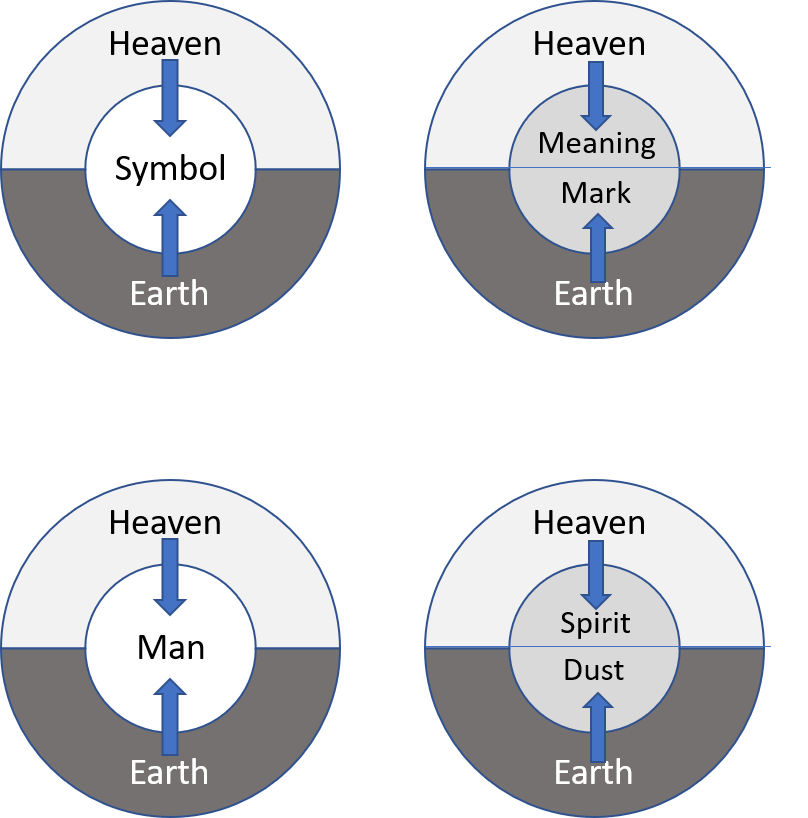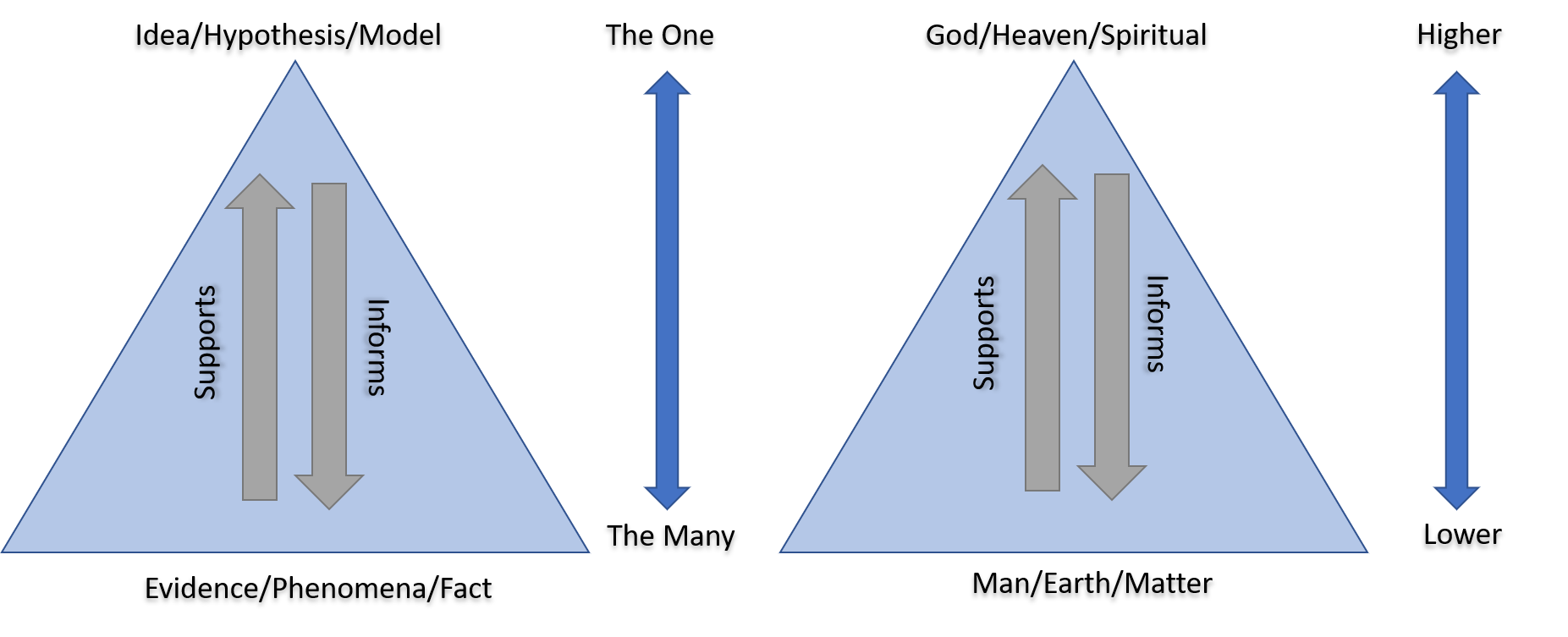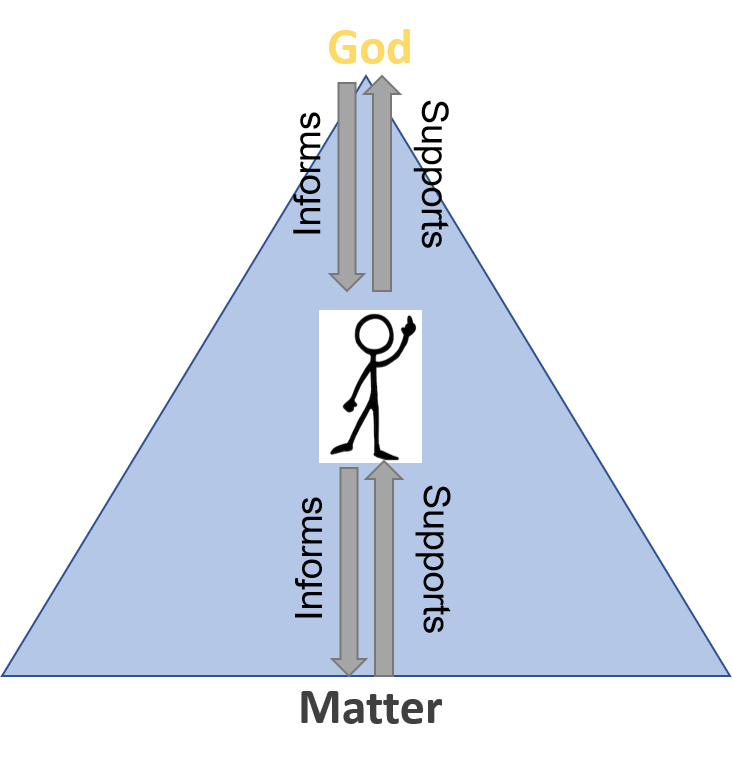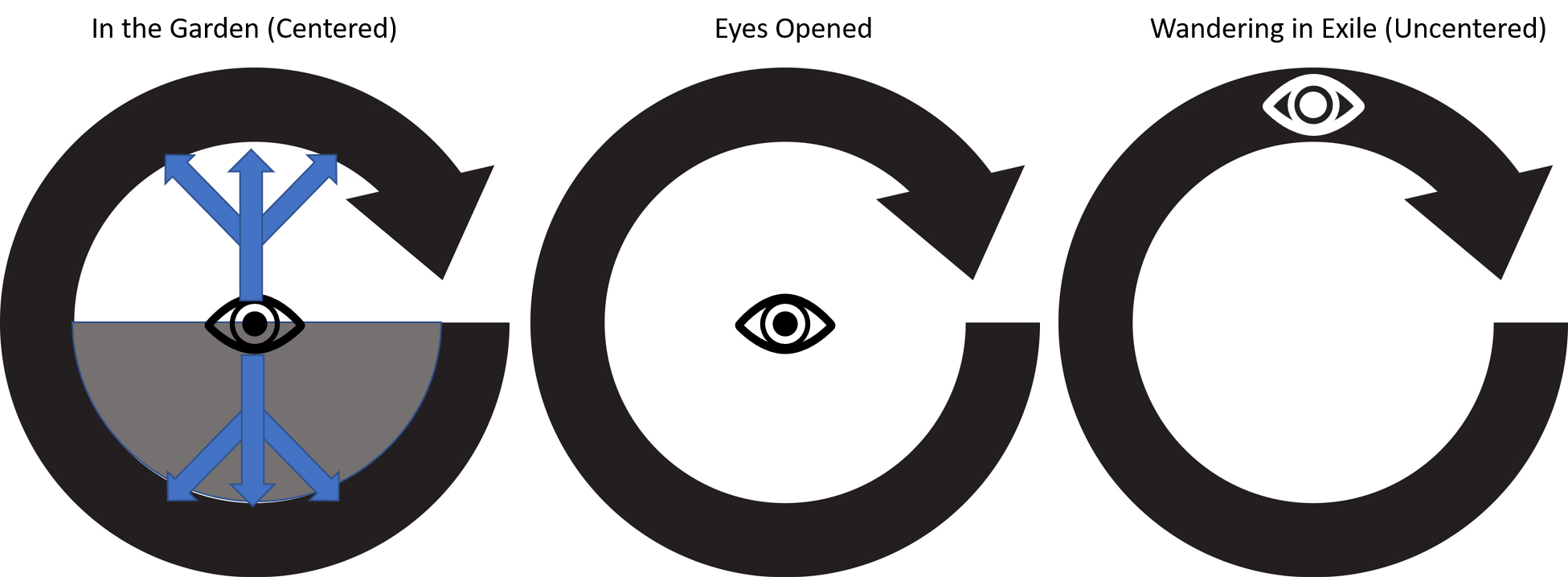Genesis as a Description of Phenomenology
Dec 20, 2020
An essay on how Genesis describes the way in which the world reveals itself to humanity. This interpretation does not preclude other interpretation, as I do not subscribe to the opposition between a literal and non-literal meanings.
Introduction to Phenomenology
Genesis is the book chapter of the Pentateuch, and hence the first book of both the Jewish and Christian Scriptures. By scientists and their zealous sycophants, both of whom are modernist in their way of thought, it is often derided as a “myth” or a “narrative”, thrown away as a by-gone description of creation as the more simple-minded ancients understood it. By fundamentalists, the creation story is understood as a literal account, from which nothing can be questioned. From both sides, the verity of Genesis hinges on whether or not it “literally” happened, but I would like to present an interpretation of Genesis that seeks to enrich the understanding of one of the most important texts of world religions that doesn’t require an answer to whether or not it “literally” happened. This is not to deny or affirm creation ex-nihilo but to put aside that question temporarily for the purpose of this essay. Phenomenological and epistemological approaches to exegesis of Genesis will be the focus of this essay.
As I have introduced in another essay, the names of things are extremely important, and though it is taken for granted, it continues to be indispensable. To name something is to single it out, shine light upon it, to call it from the unknown. For example, in a crowded room of students, the teacher will call out a student’s name, and immediately a student who was once indistinguishable from every other student, is atomized and has attention called upon him. This we do everyday; name things in order to call attention to it.
If naming things brings attention to them, then the opposite is also true; the inability to name something means that it is often left unnoticed. For example, in my daily commute to and from work, I am unable to name the buildings that I see in the train, or all the streets that I pass on my way to work. They are all part of a singular, seamless, and undifferentiated experience that falls under this category that I would call “Brooklyn” or “commute in Brooklyn”. Similarly, if I am unfamiliar with terminology of the flora of a specific biome, the only thing that I am able to say that it is a “forest” or a “swamp” or a “desert”. It is only when I am able to identify a particular, like a maple sapling in the forest, or a pondweed in a body of water that I can pull out a semblance of order. The more I can name and classify the flora, the more order I can make sense out of the seemingly chaotic phenomena.
Without the ability to distinguish an object from the many, the many objects that we see meld into a sea of chaos and unknown. In a manner they become non-existent. The “many” become one in a unified nebulous object. If you were on a hiking trail in a forest in the middle of the night with no moonlight nor flashlight, you would not be able to tell where you are even with the trail markers simply because you wouldn’t be able to see them. The darkness is all-consuming and is “one” despite all of the objects that it contains, like trees, leaves, branches, paths, etc. In a similar fashion, if you were on a boat in the middle of a lake, it would be very difficult to see below the surface of the water (especially at night), and even if you were able to see below the surface of the water it would not be very deep below the surface. The water is also “one” and though it contains manifold things, both living and dead, which we cannot distinguish from another because we cannot see. This inability to see is resolved through the presence of light, and the ability to name things.
This is the basics of phenomenology, which is to frame the basis of knowledge on the experience of a mind, namely a mind similar to that of yours or mine. In other words, it seeks not “objectivity” as is championed by the scientific method, but seeks truth in the experience of phenomena by consciousness itself.
Heaven, Earth, and the Deep
“In the beginning God created heaven and earth. And the earth was without form, and void; and darkness was upon the face of the deep. And the Spirit of God moved upon the face of the waters”. Genesis 1:1-2 [1]
- What does heaven and earth mean?
- And what does it mean for the earth to be without form, and “void”.
- What is the darkness and the “face of the deep”?
Heaven simply refers to the “spiritual” or non physical aspects of the universe. Earth refers to the material aspect of the universe. This model forms the basis for how we understand the world: unseen forces and laws govern visible phenomena. For example, the law of gravity (F=Gm1m2/r^2) describes the physical phenomena that explains why an apple falls from a tree. Even the most unbelieving scientists depend on such a union and interaction between “heaven” and “earth” in order to develop models to predict and describe physical phenomena.
“Without form, and void” comes from the Hebrew words “tohu” and “bohu”. Tohu means confusion, formless, empty, desert, and nothing, all of which are synonyms to one another. The word nothing may seem like it is not fitting here, but if we take into account consciousness and its ability to only notice things that are of importance, then it is becomes intelligible. For example, if one were a thief looking for a safe full of cash, then finding a safe that is full of bank records, social security cards, bills, and personal letters would may as well have been finding nothing in the safe at all because nothing that was found was important for the task at hand. In the primordial state of the universe, there was something, but that “something” was in such a muddled state that it my as well have been empty or nothing at all. Bohu similarly means empty or void, reiterating the meaning of tohu perhaps through a reduplication [2] of the bohu.
Darkness is present because there was not yet light (created in Genesis 1:3), and because that is the foundational state of consciousness. In the womb, we are either blind or simply see darkness. And out of the womb, as babies and infants, we do not fully develop eyesight until around one year old, seeing only blurred figures until it improves. Even after gaining sharper eyesight, we are ignorant about much of the state of the world, and it isn’t until we learn things, especially the names of things, are we “enlightened”. Through learning and experience do we go from darkness into light and from blindness to sight.
The face of the deep, or “tehom”, is another word for the darkness and is seen as the primordial waters, from which God brings forth all of creation. Linguists believe it is related to the Sumerian mythological deity Tiamat, who after being slain by Marduk, became the material Marduk used to form the heavens and Earth. There are also parallels in Chinese mythology through Pangu, the creator of the world who after dying became the basis for the material world. Tehom is also related to this idea of chaos, sometimes represented in the form of a serpent or a dragon that is defeated by a hero as in the case of Indra or Perseus. The account in Genesis represents a departure from such stories. Instead of serpents and heroes there is only the Spirit of God, which is identified with the 3rd person of the Trinity, the Holy Spirit.
Day and Night
“And God said, Let there be light: and there was light. And God saw the light, that it was good: and God divided the light from the darkness. And God called the light Day, and the darkness he called Night. And the evening and the morning were the first day.”. Genesis 1:3-5
The 1st line when God created heaven and earth is a more general layout for the rest of the Creation narrative. The 3rd line of Genesis is actually the first thing that is created by God, and the first time the structure “Let there be…. “ appears. From this point on God begins to create things, and proceeds to give them names. So the order of phenomena is as such: first there is darkness that is formless and void, then there is light. It is significant here that God “divides” the light from the darkness because it introduces the first duality of Creation. Similar dualities created later include Heaven and Earth (8 and 10 respectively), man and animal (26), and male and female (27). Where there was a “oneness” and primordial state of undifferentiation, God creates divisions (or unions depending on how you look at it).
To bring it back to phenomenology and the anthropocentric view, this is exactly how we perceive the world. The obvious observation is that we call the time of the day that has light “day” and the time when there is a lack of light “darkness”. The more subtle notion introduced here is that it is through light that we make sense of darkness, both in the physical sense and in the epistemological sense. As mentioned earlier the introduction, if one enters a dark place, like the basement with no windows, it is impossible to tell one thing from another. It is only when the light is turned on (usually on the ceiling or other high place) or in one’s hands via a flashlight or phone, can one begin to make out where objects are located, and objects in general. The order of Creation in Genesis is structured such that it is congruent with our own experience of phenomena, which is that only through the presence of light can be begin to perceive and identify things in the darkness.
The epistemological notion is that ignorance is often shrouded with language that implies darkness, while knowledge always has connotations of enlightenment. Illumination, enlightenment, awareness, insight, perception on one hand. All these have related meaning yet they all require sight which in turn requires light. On the other hand there is blindness, darkness, unawareness, unconsciousness, vagueness. Common phrases like “Ah I see”, or “I’m in the dark” reflect this intuitive understanding that understanding is associated with light, and a lack of understanding with darkness.
From this point on God begins the bringing forth of the rest of creation, which will be not be the focus of the rest of this essay. The next section will skip ahead to creation of man and woman, and of their role in Creation.
Adam as the mediator of Heaven and Earth
“then the Lord God formed man from the dust of the ground, and breathed into his nostrils the breath of life; and the man became a living being. And the Lord God planted a garden in Eden, in the east; and there he put man whom he had formed” Genesis 2:7-8
The name of “man” mentioned in Genesis is “Adam” in Hebrew such that the individual Adam can be substituted for mankind as a whole. Thus the creation of Adam is also the creation of the race of mankind. Adam is created in Genesis through the synthesis of “heaven” and “earth”, or the immaterial breath of spirit, and the material dust of creation. In a similar manner to how symbols are unions of heaven and earth, man is as well, more specifically of the breath of life and dust.

This union is pivotal to understanding the central role that humanity has in the universe. The centrality of man is reflected in his role as a “mediator” between heaven and earth. In the same way that God instructs man, and man obeys God, man “instructs” matter (or earth), and matter supports man. Matthew Pageau sums up man’s role in the universe: “informing matter with meaning and expressing meaning with matter”[3]. This is similar to the relation between “higher” and “lower” shown in the structures in my essay on the inevitability of idols and religion. Below is the first figure in that essay.

Even within the person there is a “heaven” and an “earth” in that have a head (or consciousness) and a body. The head informs the body, and the body supports the head. For example, if I wanted to read, I would inform my body to pick up the book, and the body supports the higher meaning by expressing that “meaning” through an observable action of picking up the book. In general, a person cannot survive without the cooperation of both, and an excess (or defect) of one over the other can destroy a person. In the specific case of man in relation to God and Creation in Genesis 2 it would look something like the following figure with a tripartite hierarchy:

Thus, this model precludes the possibility of mankind’s “equality” with matter or Earth in the strict sense that modern thinking presumes. While modernists propose that homo sapiens is on the same level as nature or Mother Earth, being that the species is a product of nature, and oppose the dominion of man over nature, they inevitably manifest this hierarchy in their own lives and in the processes required to sustain their lives. Agriculture, even without livestock, is a strict practice that requires artificial manipulation of both the land and the actual crops, especially today with the advent of genetically modified organisms. On a more familiar level, the very act of eating food (vegan or not) is a manifestation of this pattern of reality. The person (heaven) informs food (earth) through the act of eating and digesting, and the matter supports the person by yielding nutrients and calories. The principal act of survival is this interplay between “higher” and “lower”.
“And out of the ground the LORD God formed every beast of the field, and every fowl of the air; and brought them unto Adam to see what he would call them: and whatsoever Adam called every living creature, that was the name thereof. And Adam gave names to all cattle, and to the fowl of the air, and to every beast of the field; but for Adam there was not found an help meet for him.” Genesis 2:19-20
The portion of Genesis quoted above describes Adam’s role in the naming of the animals and is akin to as a forerunner to the modern science of taxonomy and natural history. Made in the image of God, Adam acts too in the likeness of God by naming the animals like God named things like day or night. Again, it is an example of lowering spiritual meaning onto matter. By assigning names to things, Adam gives a spiritual identity to both fauna and flora alike in the same manner that the very source of Adam’s identity comes from God. The examples of both eating and naming are closely intertwined as they are “both examples of putting matter under influence of your spiritual authority”[4].
In some strange sense, atheist scientists participate in the story of Adam, mediating between heaven and earth, despite denying the reality apart from matter. By hypothesizing theories (heaven) that describe the behavior of matter (earth), they serve as a center in this tripartite structure. Lastly, I must note before moving on that the role of man as “higher” or “lower” depends on the context in which he is placed. With respect to God, or the angels that he has to host (as in the case of Abraham in Genesis 18) he is the lower, but with respect to Creation, he is the higher. Like with most symbols, man is multivalent.
Paradise Lost
“And the LORD God commanded the man, saying, Of every tree of the garden thou mayest freely eat: But of the tree of the knowledge of good and evil, thou shalt not eat of it: for in the day that thou eatest thereof thou shalt surely die.” Genesis 2:16-17
“And they were both naked, the man and his wife, and were not ashamed.” Genesis 2:25
“And when the woman saw that the tree was good for food, and that it was pleasant to the eyes, and a tree to be desired to make one wise, she took of the fruit thereof, and did eat, and gave also unto her husband with her; and he did eat. And the eyes of them both were opened, and they knew that they were naked; and they sewed fig leaves together, and made themselves aprons.” Genesis 3:7-8
“Therefore the LORD God sent him forth from the garden of Eden, to till the ground from whence he was taken.” Genesis 3:23
This last section is an exegesis of the fall, or Adam and Eve’s exile from Eden as described in the snippets from Genesis 2 and 3 above. Generally, the Garden of Eden can be seen analogy for a place of familiarity, of comfort and peace, where one knows one’s role and is effective at exercising that role. The world revolves around this place of comfort. Eating of the fruit from the tree of good and evil and subsequently falling in this analogy would be akin to realizing something, and being displaced from where you thought you once were to somewhere you were no longer familiar with. For example, a wife may be one day feeling very secure about her place in the family, and about the love and care that she receives from her husband. But the next day, she finds a misplaced pair of women’s underwear lying on the floor of the bedroom after a day trip with her friends. Immediately this new knowledge of her husbands infidelity opens her eyes, and she was no longer in the same place that she once inhabited. Her home is no longer her home. Instead she is “in exile”.

On a larger scale, the Genesis Fall describes the “dangers of acquiring greater material knowledge at the expense of spiritual insight” [6]. Pageau further compares it to the transition from the geocentric model to the heliocentric model of the solar system. In the latter, the celestial bodies revolves around the Earth, and in the former, the Earth revolves around the Sun. This paradigm shift is profound as it parallels Adam and Eve’s eyes opening and their subsequent discarding of their previous worldview in which they inhabited the centre, and finally their exile to wander a meaningless universe. This narrative continues to materialize today in the West’s technological advancement at the cost of atheism, agnosticism, and in general indifference to God.
What about nakedness? To be naked is to be vulnerable, without purpose or direction. Before the Fall, nakedness within the Garden is not an issue because they are “clothed” by God through a right relationship and communion with God. It is only through the loss of communion do they begin to recognize that they are naked, and seek to clothe themselves. Analogically, physical nakedness is not an issue with people we are intimate with but the same nakedness in front of strangers is generally distressing. On an emotional plane as well, confessing one’s faults and problems to ones family and friends is not shameful. In such circumstances we are still “clothed”, but if such secrets were revealed to the entire world, that nakedness would cause us shame.
Nakedness is also related to names. One can be made naked if things that we project about ourselves are revealed to be false. For example, Vijay Chokal-Ingam was “clothed” as a black man during his medical school application and was accepted after being rejected as an Indian man. If at any point he was discovered to be Indian rather than black as his application stated, he would have been “naked”. In short, the names, jobs, roles, identities we have are intimately tethered to how we are “clothed”. The disturbance of any of those, like in the case of a loss of a job, failure to succeed in school, a revelation about one’s identity, will strip us naked and send us into exile.
Conclusion
The phenomenological interpretation of Genesis as something that no matter the time period will always be true as long as what it means to be human is true. Of course, this does not discount the possibility of changing the fundamental nature of language and meaning. When darkness becomes associated with knowledge and enlightenment, and light becomes associated with ignorance and blindness, perhaps Genesis will cease to be relevant. But until that point, it remains a foundational text to understanding ourselves, and our place in the universe.
Links and Footnotes
[1] Translations will be using KJV
[2] Linguistics term where pairs of words, or parts of a word are repeated through a repetition of one word or parts of one word. Examples in English include “razzle-dazzle”, “bye-bye”, “flip-flop”.
[3] Matthew Pageau, The Language of Creation, Cosmic Symbolism in Genesis (May 29, 2018); Chapter 15, Page 53
[4] Matthew Pageau, The Language of Creation, Cosmic Symbolism in Genesis; Chapter 17, Page 61
[5],[6] Matthew Pageau, The Language of Creation, Cosmic Symbolism in Genesis; Chapter 2, Page 6
Share